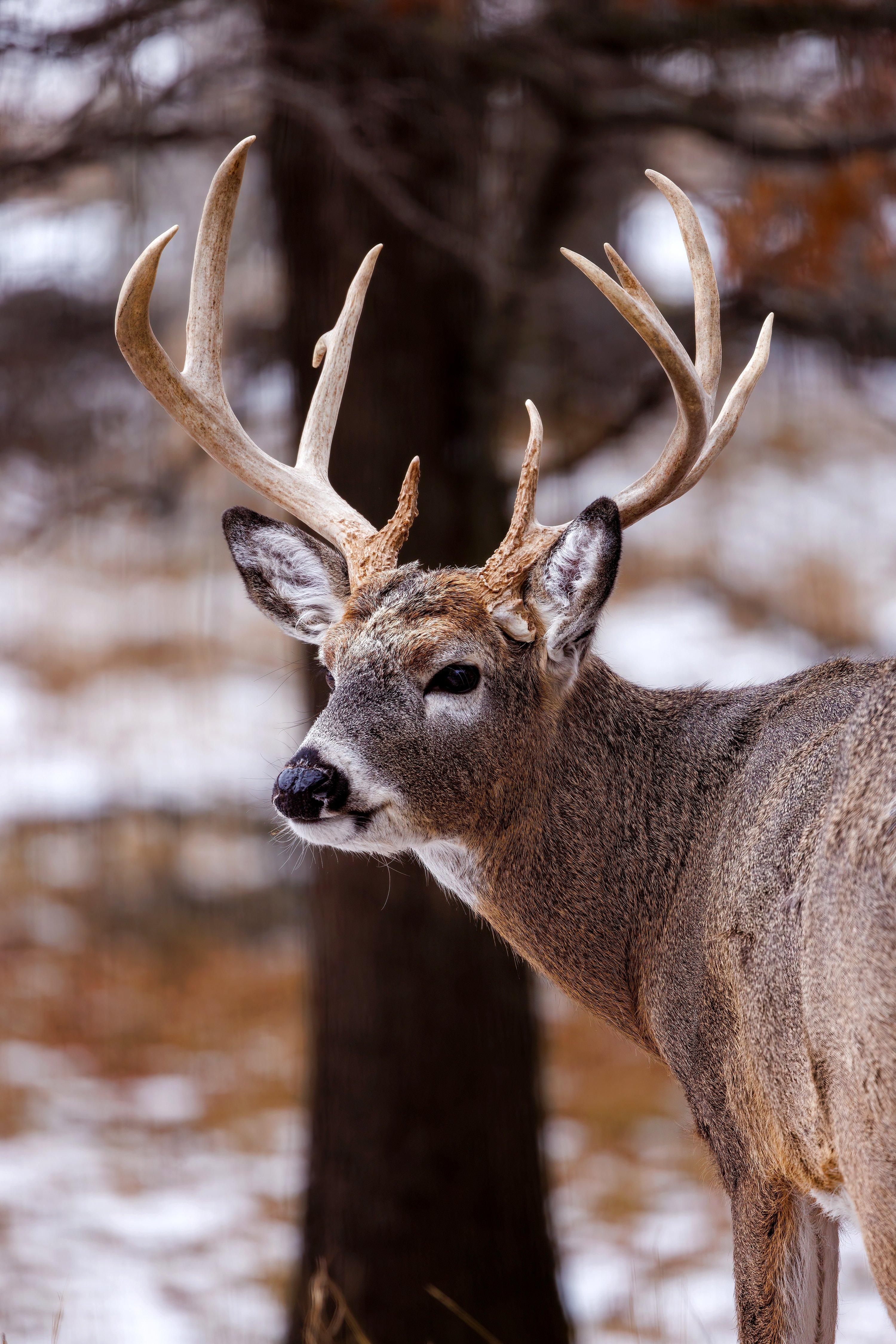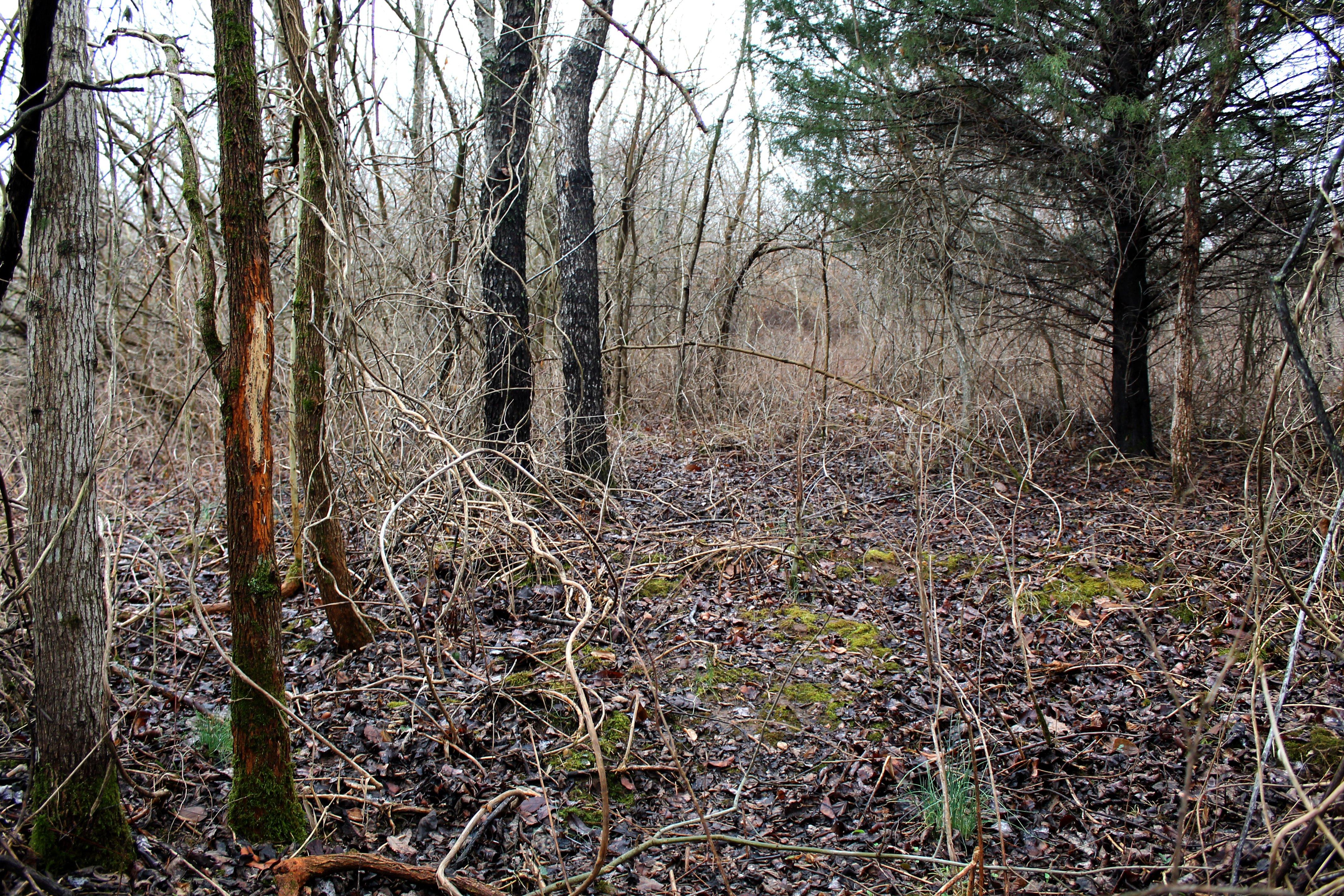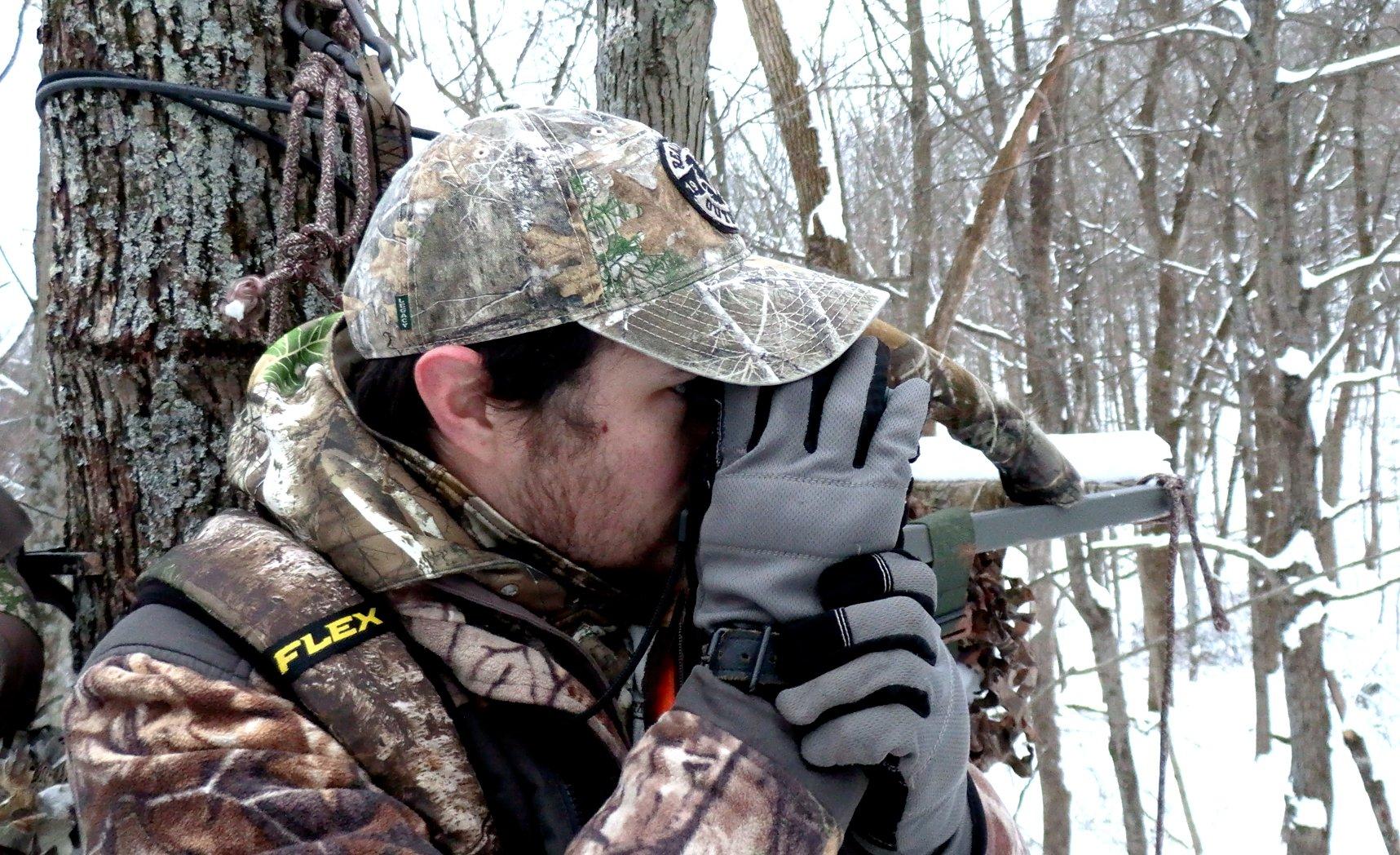How to ensure more and bigger whitetails spend late fall and winter where you’re able to hunt for them

There are still some big, mature bucks out there. But it’s easier to keep them close than to go find one, right? Image by Aaron J Hill
The rut is over, and the grayness of winter is quickly settling over the landscape. Hunting pressure recently peaked, and the deer are jitterier than field mice in a feed bin. The slightest sound or movement sends them scampering. And a nose-full of human stink can cause far more.
As a result, during the late season, after gun seasons end, and once deer hunters retreat to their warm homes, the landscape can seem devoid of deer. But this is a mirage. All of the deer aren’t dead. Most of them are still alive. And some of them are packing impressive headgear.
The truth? Deer are congregating in areas that now provide what they need. Bucks and does of all ages are seeking out what other properties can’t give them — food, shelter, and security.
Of course, cover is quickly diminishing. Leaf cover is no more. Furthermore, food sources are depleting. Standing crops are gone. Waste grain is running out. Native browse is hitting yearly lows. Options are limited. And to conserve energy, whitetail metabolisms are slowing down, and so deer are moving less. They’re bedding very close to the best food sources they can find.
Despite slowing metabolisms and decreased movement, most bucks have lost up to 25% of their body weight since the rut. They must feed to recoup what they can and refrain from losing more. So, for properties that still offer what deer need, the late season screams hunting opportunity. Here are eight steps to hold late season deer.
- FIND THE RIGHT PROPERTY
In terms of late-season quality, all properties are not equal. Those hunted hard during the early season, pre-rut, and rut might not hold late-season deer. Some tracts might not produce vital late season food sources. Other lands might not offer the needed bedding cover types.
Thus, the first step in holding late-season deer is finding the right property. With the correct canvas, odds of success increase greatly. For example, a tract consisting mostly of north- and west-facing slopes aren’t as likely to hold deer during daylight. Ground with south- and southeast-facing slopes (with cover) has more potential.
It’s much easier to add food sources. Where legal, bait and supplemental feed can produce immediate results. Food plots sprout and mature within weeks or months. Crop species operate on similar timelines. At least, enough so to feed deer. Of course, trees take five, 10, or more years to produce mast, species depending.
Bedding cover is more difficult to create. Within one to three years, you can craft grass-based bedding cover. Within four to six years, you can establish decent high-stem-and-sapling-counts. But you cannot make wholesale, big-scale topography changes. It’s far easier to find a tract that already offers what you’re looking for.

Thick, secluded cover close to food is a big late-season factor. Image by Honeycutt Creative
- FIND THE RIGHT BEDDING
Once you’ve selected the right tract, scout to find the best late-season bedding. This is all about solar and thermal bedding cover. The former is south- and southeast-facing slopes that receive more wintertime sunlight and less wintry wind. The latter is derived from dense stands of conifers, such as cedars, spruce, and pines, that shield wind, rain, and snow and even retain more heat at ground level.
Because these two bedding types offer reprieve from the elements, deer now seek out such specialized cover. And properties that offer overlapping thermal and solar bedding really attract deer, because these create the best bedding possible.
When these aren’t present, higher stem counts of dense cover that’s located close to food sources can hold deer, too. And if human intrusion and other unwanted invasions (i.e. coyotes, dogs, etc.) are absent, that’s where deer might be.
Don’t Miss: ARE NEIGHBORHOOD DOGS RUNNING DEER? WHAT HUNTERS CAN DO
- BEEF UP BEDDING AREAS
No matter how good a bedding area is, it can likely be better. There are numerous ways to increase its quality, situation depending. If trees are getting more mature, consider a select cut to increase sunlight to the forest floor and thicken the landscape. If the outer edges of the bedding are too exposed, hinge-cut some low-value trees and/or plant conifers around the borders. Have some open, unused clearings? Plant native grasses to provide another bedding type. The situation dictates specific needs and correct plans.

A good food source is a surefire way to find a late-season buck. Image by Honeycutt Creative
- PROVIDE BETTER FOOD SOURCES
Due to long stints with cold temperatures, whitetails need the right foods to combat the elements. Food high in carbohydrates allows deer to generate body heat needed to overcome extended periods of frigid temps.
Having the right late-season food sources matters as well. Good options include corn, standing soybeans, cereal rye, and oats. Promoting quality native browse species is solid, too, as these account for the bulk of the deer herd’s diet.
When snow hits, it becomes much more difficult to forage for food. If Mother Nature lays down more than 4 to 5 inches, it’s increasingly difficult for deer to forage ground-level food sources. Because of this, properties with feeders or standing food sources that extend above the snow line become even more attractive to whitetails. Not only can this hold resident deer but it can also pull in neighboring deer, too. Here, standing soybeans reign supreme.
Don’t Miss: IS THERE A WHITETAIL FOOD PLOT SILVER BULLET?
- BUILD STRATEGIC WATER SOURCES
As mentioned, due to slowing metabolisms and energy conservation, deer prefer to move shorter distances between bedding and food sources. That’s true for water sources, too. Therefore, building strategic water sources can attract deer.
Do this by digging small watering holes on the edges of bedding areas. Or, place them in staging areas between bedding and food sources. This helps keep deer along preferred lines of movement. Of course, to ensure these water sources stay open even in sub-freezing temperatures, consider implementing pond heaters or de-icing devices that hook up to well-equipped solar panels.
- ESTABLISH A SANCTUARY
Everyone has a different definition for the size, distinction, and purpose of a sanctuary. That said, size is relative to the acreage you own. Generally, sanctuaries are bedding areas and sometimes staging areas that are off-limits to human intrusion before and during deer season. In my opinion, sanctuaries should be no larger than a buck’s core area, though, which ranges from 30-70 acres, buck depending. It’s OK to have multiple sanctuaries on a large property, but these should be spread throughout the tract, by design, to intercept the core areas of multiple deer.

Time your strike on a high-odds day, such as just after a fresh snow. Image by Honeycutt Creative
- ADDRESS ISSUES
Most issues are solved with preventative measures, like creating effective bedding areas with years of sweat equity and setting up diverse short-, mid-, and long-term food sources. Some might consider trapping bobcats and coyotes to reduce predation. It’s all about minimizing stress for the deer herd.
Other issues, such as trespassing, or a sudden influx of predators, can be addressed, too. Post some long-term cell cameras with external battery sources (big battery boxes or solar panels) around the property. Use these to monitor for problems and to maintain herd awareness.
- STRIKE WITH PRECISION
Once you begin holding late season deer, it’s crucial to keep them there. Hunting without thought to minimal intrusion hinders that effort.
If possible, don’t hunt the weekends. There are obvious exceptions, like an opening week you don’t want to miss, or that you can’t hunt during the week. But most people hunt on weekends, and limiting that pressure yourself allows neighboring hunters to push deer into your property, rather than you pushing them onto theirs.
Furthermore, odds are high that those coveted cold fronts and other high-odds days will land on a weekday, and not a weekend. So, if nearby properties are pressured on potentially low-odds Saturdays and Sundays, you can move in when the situation is good during the week. Maybe that’s a sudden temperature drop after a series of warmer days. Perhaps it’s a sudden warm-up after a long stretch of colder weather.
Either way, when hunting, always implement low-impact strategies. Consider leaving your late-season spot(s) unhunted until the late season. Hunt afternoons only. Use quality entry and exit routes. Budget permitting, use enclosed hunting blinds. Don’t get aggressive with calling or decoying. Hunt the outer edges of the property.
Follow each of the above steps, and you’re well on your way to holding late season deer. Then, you’re merely a well-executed hunt away from the buzzer-beater buck of your dreams.
Don’t Miss: 81 WAYS TO FAIL AT DEER HUNTING













